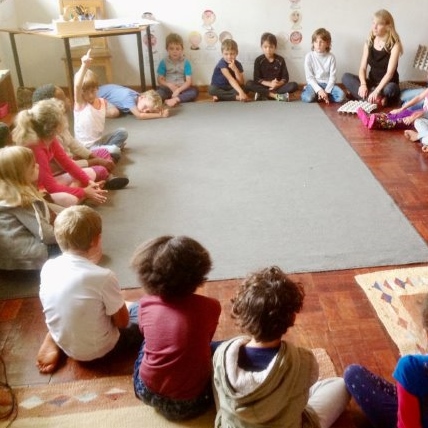
Latest Stories

Alternative education where wriggle room is the name of the game
MAYA LOON
As a teacher, I dislike many aspects of the mainstream schooling system, but I’m aware how the term “alternative education” can inspire sniggers among some, evoking images of feral-looking, bare-footed children running wild with intermittent pauses to knit a few more rows of their woollen tents while sipping kombucha.
Alternative education is simply, as the word implies, just about applying other available possibilities from the conventional school.
A major aspect of schools resisting the mainstream, has to do with “wriggle room”. How much space does the teacher have to respond educationally to what’s happening in the conversation in the classroom?
How much space does the student have to negotiate that conversation (while still meeting the requirements of their syllabus)?
My first teaching post was different. I joined a very conservative, “good” boys’ high school in Cape Town. On my first day I was handed the detention file and advised, by the head, to “go in and show them who’s boss”.
Against my intention, I did try that approach. And I failed miserably. It became clear to me that teaching by imposing fear in my pupils was both useless and damaging. I thought that was the end of my teaching career as I did not imagine that schools that rejected the usual tactics of punishment and terror existed.
I was therefore very fortunate to come upon an alternative high school in the UK inspired by the ideas of Jiddu Krishnamurti (Brockwood Park School).
Returning to South Africa, I was again doubtful I’d find anything like that here, but was heartened to discover Kairos School of Inquiry in its fledgling stage and I went on to help to build that school further.
Both of these schools have, at their core, the principle of open-ended and free-thinking inquiry. This principle ensures wriggle room for the students. Posing questions themselves, classroom conversations become more relevant and more alive than conventional school lessons.
Inquiry-based learning confronts the assumption that the teacher is the source of all knowledge and the final judge of students’ opinions. Skillful teachers are able to incorporate these conversations into the standardised curriculum, honing critical thinking skills and improving general skills of literacy.
At the same time, the students improving their abilities to see the bigger picture, to think out of the box, learning to listen to each other’s point of view, and exploring what they personally believe. How very different to the conventional syllabus which is so often meaningless for the majority.
So often mainstream schools do not honour children for the varied ways in which they may excel, nor are the typical “school geniuses” challenged for their weaknesses in the intelligences less frequently valued such as social diplomacy or artistic ability.
Employing Howard Gardner’s idea of “Multiple Intelligences” into the school system, such as in school assessments, offers a far more comprehensive sense of a child’s development and progress in a whole sense. Children learn holistically if they are taught holistically – holistic learning requires wriggle room.
For wriggle room to be effective in a school, requires healthy relationships. Developing meaningful and caring relationships between students and teachers is fundamental to any learning environment. This ethos tends to spread to the relationships between children. It usually naturally manifests as caring relationships between the staff in the school as well.
How might a school achieve this? Daily “check-ins” are a practical possibility: when practised sincerely, regularly sharing what’s alive for each person – student and teacher – can release negative emotions and build understanding each other more fully.
Inviting students to teach each other across age-groups is another example, and, doing chores together – cleaning or fixing or creating: these are ways for students and teachers to interact beyond the bounds of the top-down authority model the mainstream entrenches.
A valuable tool for achieving wriggle room in a school is the use of “Integrated Studies” -immersing a class of students in a field of study for period of at least a few weeks, rather than teaching distinct and sometimes arbitrary topics from lesson to lesson and teacher to teacher.
This immersion achieves a simulated adult workplace where students can role play being zoologists or historians or economists, the educational impact of which can be profound.
Perhaps the most fundamentally different thing about the schools I have taught in has been the development of a language that does not shame, blame or inspire fear among the children.
Using a framework like Marshall Rosenberg’s model of “Nonviolent Communication” can help to create an ethos of mutual respect and empathy in a school, and improves the students’ skills of conflict resolution.
Imagine if even mainstream schools had this kind of wriggle room for their students and teachers. I dream of a future where this is so.
Maya Loon is co-founder of Kaiross School of Inquiry. She has diverse educational experiencein both mainstream and alternative schools.




